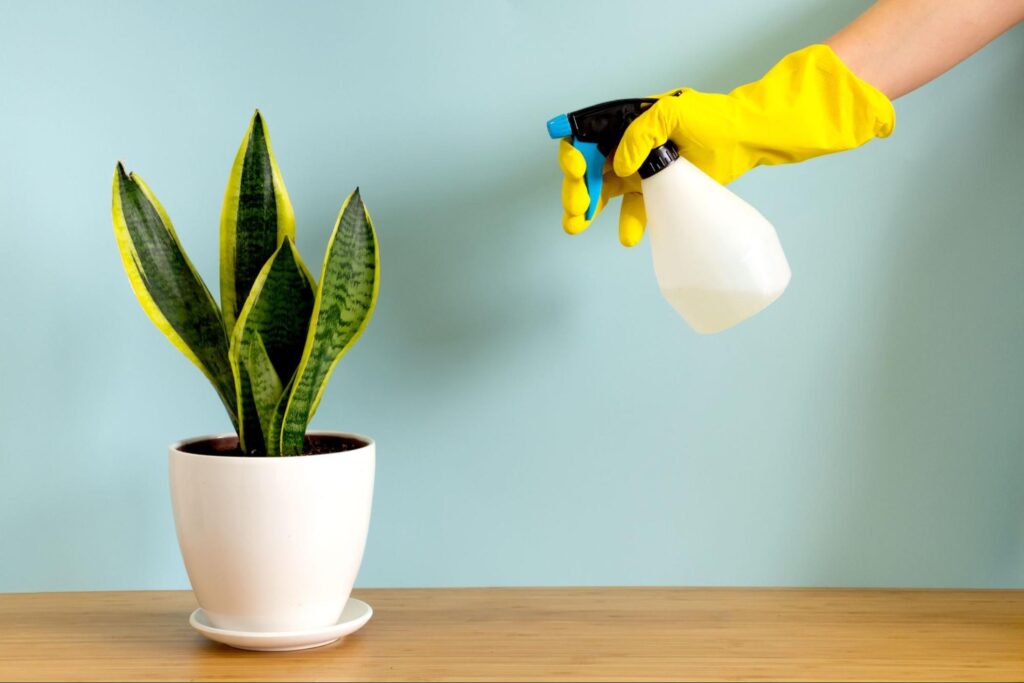Some Ideas on Snake Plant Leaves Turning Yellow You Need To Know
Snake Plant Leaves Turning Yellow Can Be Fun For Everyone
Table of ContentsSnake Plant Leaves Turning Yellow Fundamentals ExplainedThe Facts About Snake Plant Leaves Turning Yellow RevealedThe Main Principles Of Snake Plant Leaves Turning Yellow Things about Snake Plant Leaves Turning YellowOur Snake Plant Leaves Turning Yellow Statements
If overwatering in serpent plants is not remedied, the yellow spots of your mother-in-law's tongue plant will turn dark brown or black. To dismiss any kind of various other root causes of snake plant leaf yellowing, remove the plant from its pot and examine the roots to see if they're soggy and have a foul smell.At the same time, only the leaves dealing with the home window will certainly transform yellow for indoor serpent plants if photodamage is the concern. Origins have a greater chance of shedding when there is excess fertilizer and nutrients in the dirt. This then hampers the consumption of water and crucial nutrients, triggering the mother-in-law's tongue plant to tension and spot yellow fallen leaves.
Right here's exactly how to save a snake plant that's turning yellow: Quit irrigating your serpent plant up until the dirt runs out totally if the yellowing results from overwatering. Return to watering, however not greater than as soon as weekly. As a guideline of thumb, prevent sprinkling your serpent plant until the top two inches of the soil feel completely dry.

This will certainly help to increase drain prices, taking into consideration the heat and sunlight problems throughout the day. Snake Plant Leaves Turning Yellow. Correct drainage entails utilizing a fast-draining soil mix and a growing pot with drain openings at the base. It is best to use a dirt mix that consists of perlite and coarse sand for rapid water drainage
The Of Snake Plant Leaves Turning Yellow
There's a positive side as you can grow brand-new plants by multiplying minority remaining leaves that are still healthy. Referrals.
Also, insects, illness, overfeeding, lack of some nutrients, or being rootbound are feasible reasons. Let us now check out each of these causes. We mean to give you usual signs related to each reason and what to do. Water is important in soaking up nutrients required for chlorophyll. Snake Plant Leaves Turning Yellow. Lack of water creates the decay of chlorophyll.
Without water, your plant can not absorb the mineral, some important for chlorophyll manufacture. Hence you may see some yellowing or staining. Snake plants enjoy a damp, not soaked, and you should not permit the potting mix to dry totally for a very long time. We suggest sprinkling your snake plant after the soil dries out completely or the majority of it is completely dry.
A substantial one might cause overwatering, and if it is too little, your plants will certainly dry out rapidly. When watering, fill the dirt till excess water originates from drainage holes. Pour any water that gathers on the dish. Last but not least, never adhere to a serpent plant watering session. Rather, always feel to guarantee the potting why not look here mix is dry at the very least half-down the pot.
How Snake Plant Leaves Turning Yellow can Save You Time, Stress, and Money.
Otherwise, offer some leading watering. Get a harsh estimate on just how typically you water your serpent plant and set a tip to avoid disregard. But prior to watering, initially, feel the dirt with your finger. Light is required for the biosynthesis of chlorophyll in all blooming plants. However excessive will weaken chlorophyll.
In warm summers or during warm waves, take your plants to cooler places. Don't place your plants near house heating system vents, radiators, fire places, or anything that discharges heat.
A lack will certainly create in-between blood vessels yellowing on young fallen leaves. When it is doing not have, plants collect nitrates however fail to utilize them to make healthy proteins.
Despite the fact that snake plants have a record for being virtually impossible to eliminate, they nonetheless experience a reasonable share of problems. You are not the just one that has actually seen that your serpent plant's leaves are turning yellow. Snake Plant Leaves Turning Yellow. We will certainly check out the reasons snake plant leaves turn yellow and just how to take care of it
About Snake Plant Leaves Turning Yellow
:max_bytes(150000):strip_icc()/yellow-leaves-GettyImages-1433069073-98815dba2356427cb6a35d0f53f68983.jpg)
A wet container will consider considerably much heavier than a dry pot, so ultimately, you should be able to determine just how dry your crop is based upon more information the mass of its container. Snake plant leaves may come to be yellow if you let your plant dry, after that wait until the dirt is totally dry before rewatering.
You require to think about greater than simply how frequently you water serpent plants. You additionally need to consider what strikes the fluid when it is put in the pot. After sprinkling your plant, you must not let the roots stick around in water for a couple of days since this can create root rot.

Fascination About Snake Plant Leaves Turning Yellow
You just require to offer enough supply and ensure proper water drainage to permit the extra water to drain pipes out. Not excessive neither too little; there will be a suitable environment for fungis ailments if there is any kind of standing water. The snake plants can be watered every 2 to six weeks.
After placing them in the morning sun, you will discover that serpent plants' development rate would raise and appear healthier. Positioning them in the exterior early morning sunshine will certainly require more water, so when per week is adequate. However, if the area gets too much sunlight and the surface really feels dry, you can sprinkle them two times per week.